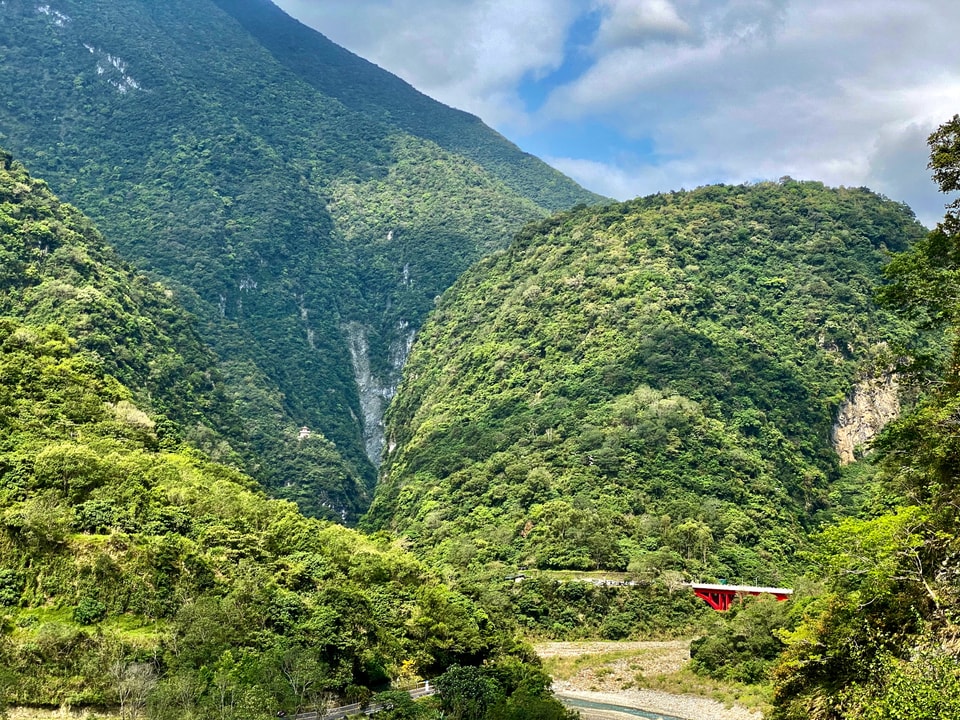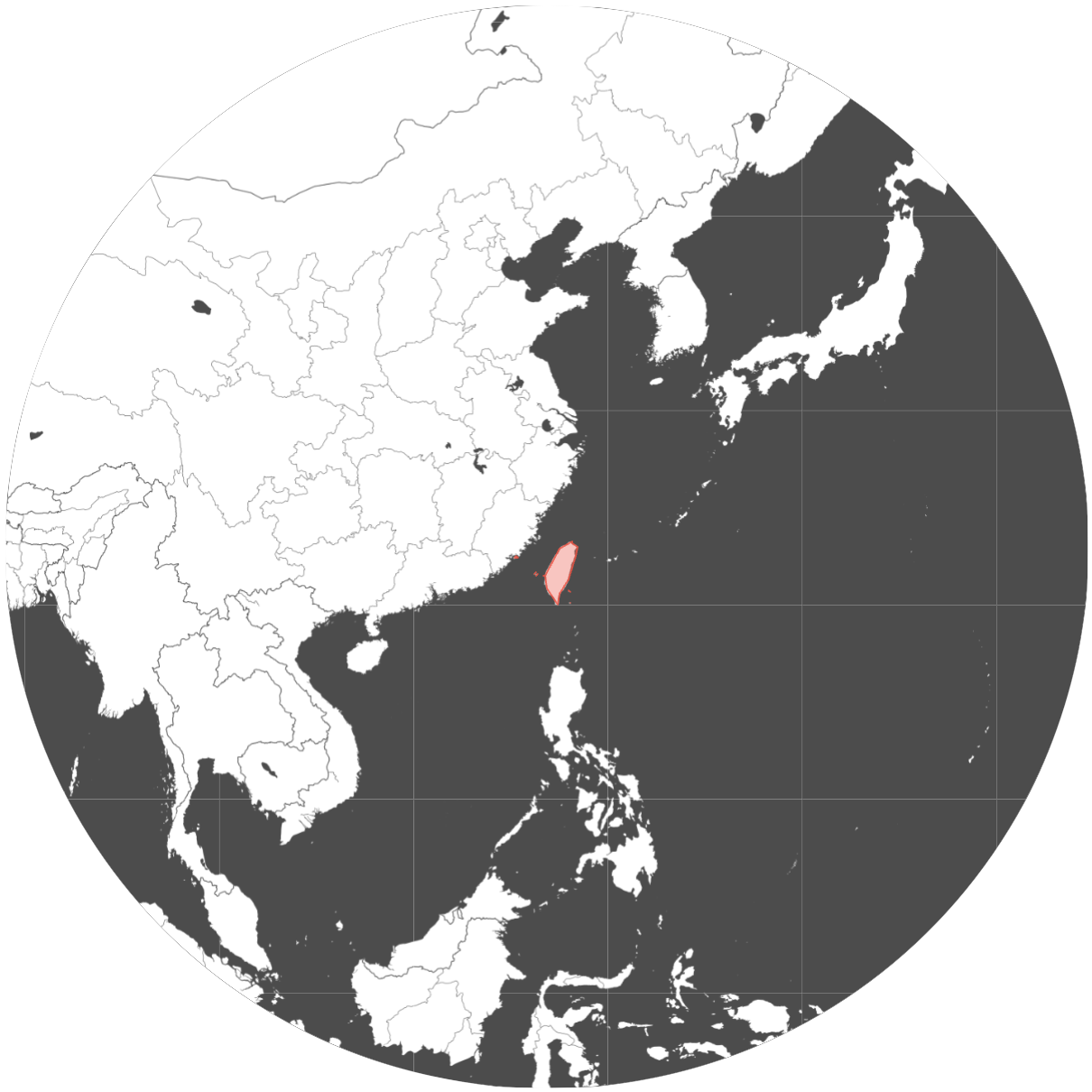Taiwan
Hualien
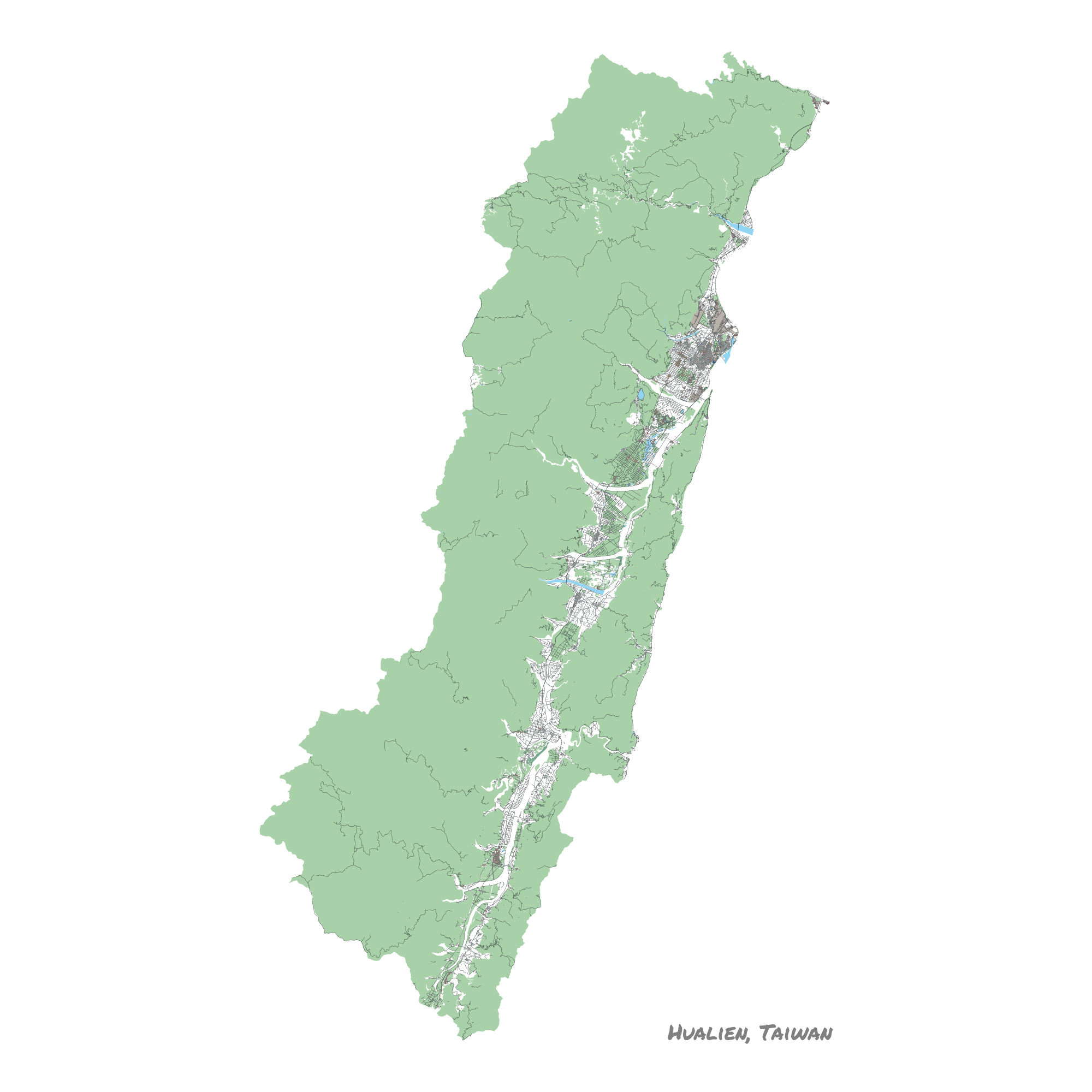
Hualien was supremely bustling with tourists ready to take in Taiwan’s most celebrated geological feature. (Which is Taroko Gorge.) Let’s get right to it.
Taroko Gorge
The central gorge trail acts as a long, leisurely stroll, often shaded, and mostly flat once you enter.
After passing a well-photographed red bridge, you’ll occasionally see remnants of old infrastructure, deeply turquoise shallow water (remember, no swimming), and live monkeys. Along the way, you’ll find clusters of food and drink stands set up where tour busses park and dump off loads of transient trekkers.
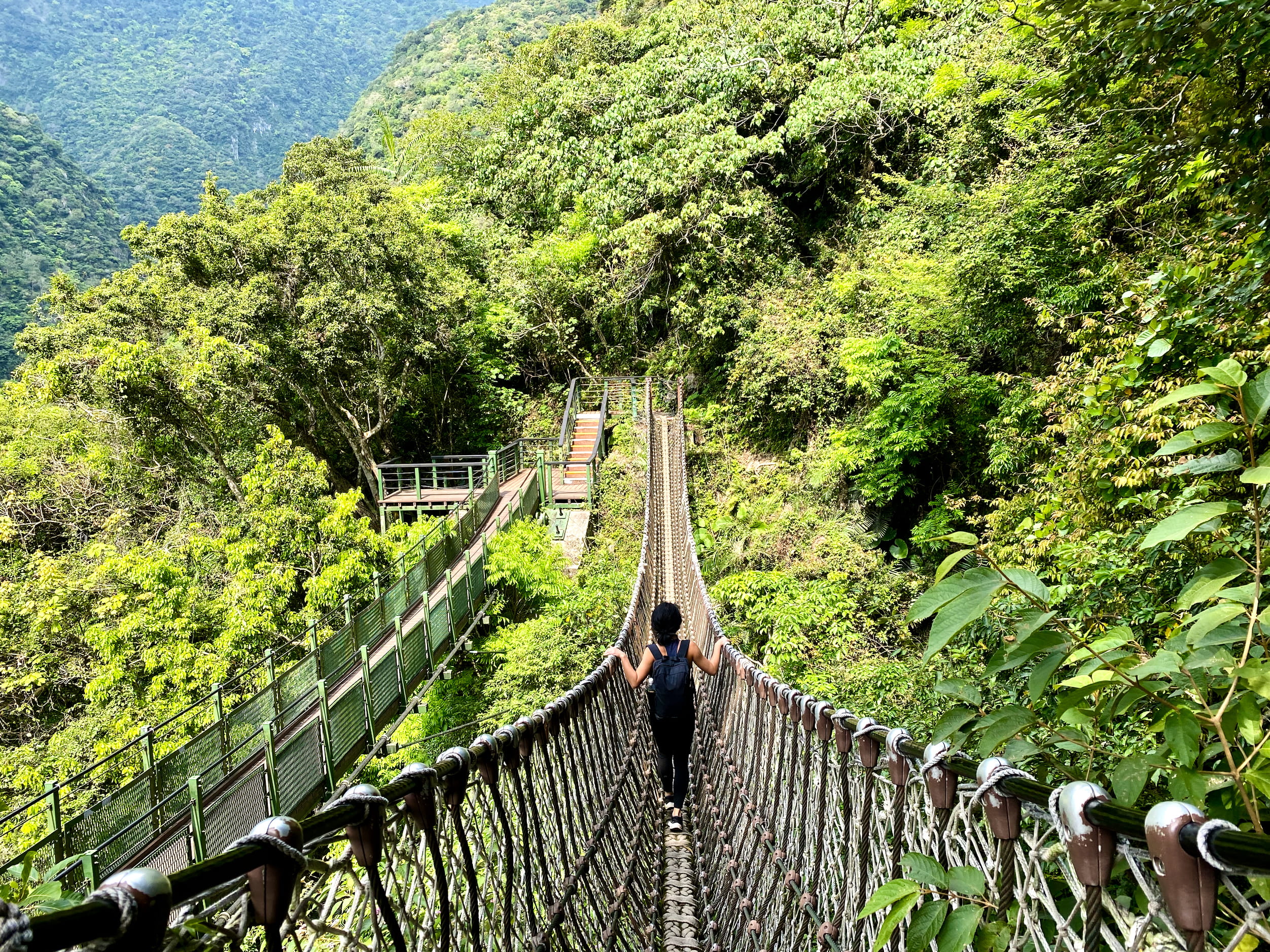
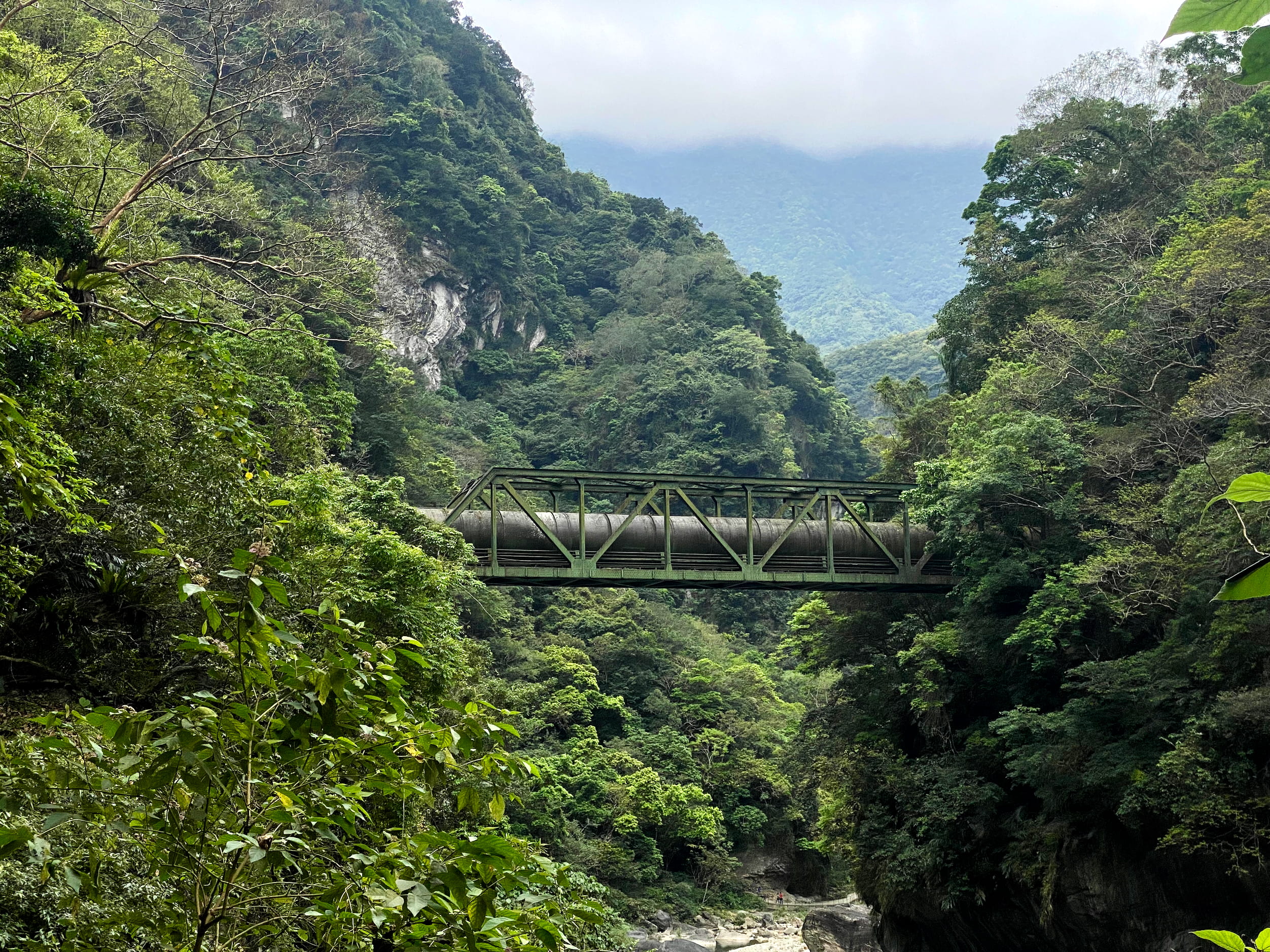

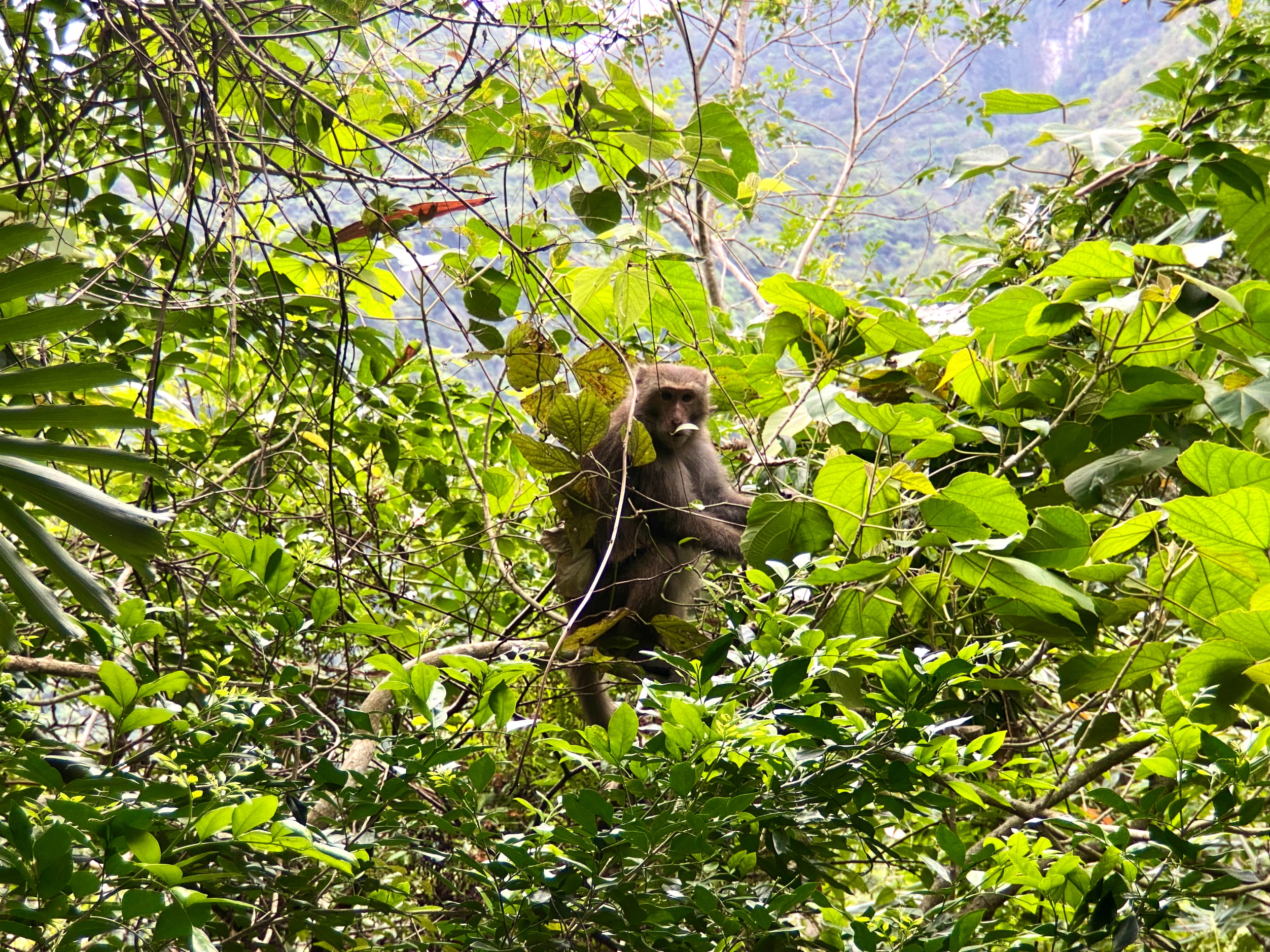
We also saw monkeys hanging out by rest stops a handful of times while driving, but whenever I pulled over to photograph them they scattered. There’s something eerily self-conscious about watching monkeys that I can’t totally put my finger on, but it’s definitely got to do with the fact that we’re close cousins in the tree of life.
We made it back to our bus stop with plenty of time to spare, so we decided to do the other short little loop just around the visitor’s center.
Upon reaching the trailhead sign, we saw the estimate at some ridiculous amount of time. (Can’t remember, maybe like four or six hours or something.) No problem, we thought,01 we’d seen this before. The hiking times in Alishan were wildly sandbagged; a forty-five minute trek would be estimated at over two hours. We’ll just take a quick loop around and head back.
Well, it turns out they weren’t joking, because the whole thing was stairs. I don’t mean like, there were a lot of stairs. I mean it was one hundred percent stairs. It was just a massive, multi-dozen part, metal stairway, twisting and turning all up a huge hill. But that wasn’t even the best part.
The best part is that it was a prank hike. There was no view at the top. Zero. None. Completely overgrown.
I couldn’t even be mad. How many times have you thought: wouldn’t it be funny if you got to the top and there was just nothing? You just had to go all the way back down? OK, I never thought it either, but it’s still a great idea.
The one thing we did get to see, maybe halfway down the hill, was a view of an enormous dried-up riverbed (more on that later), and what I believe is a cement factory.
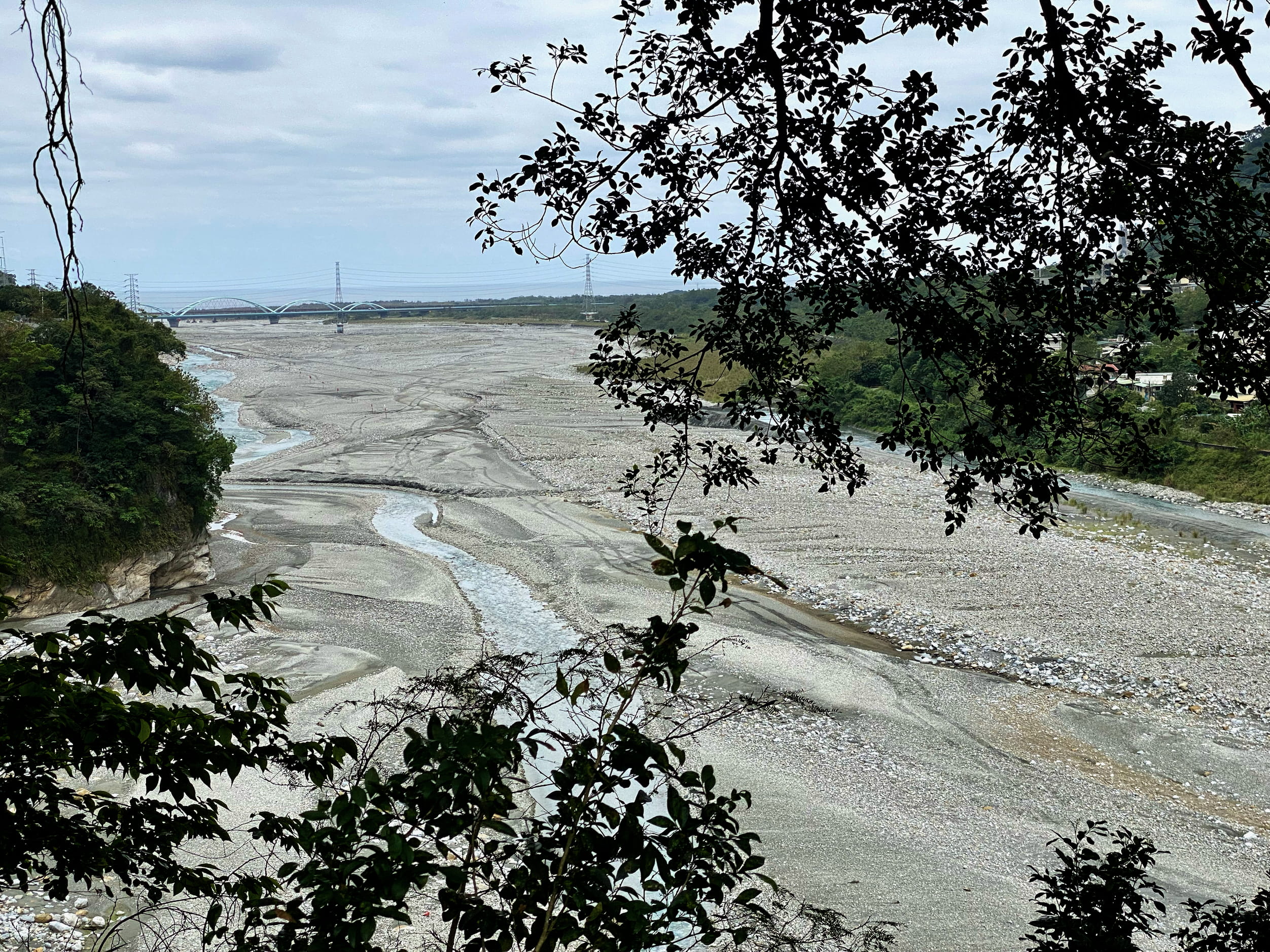
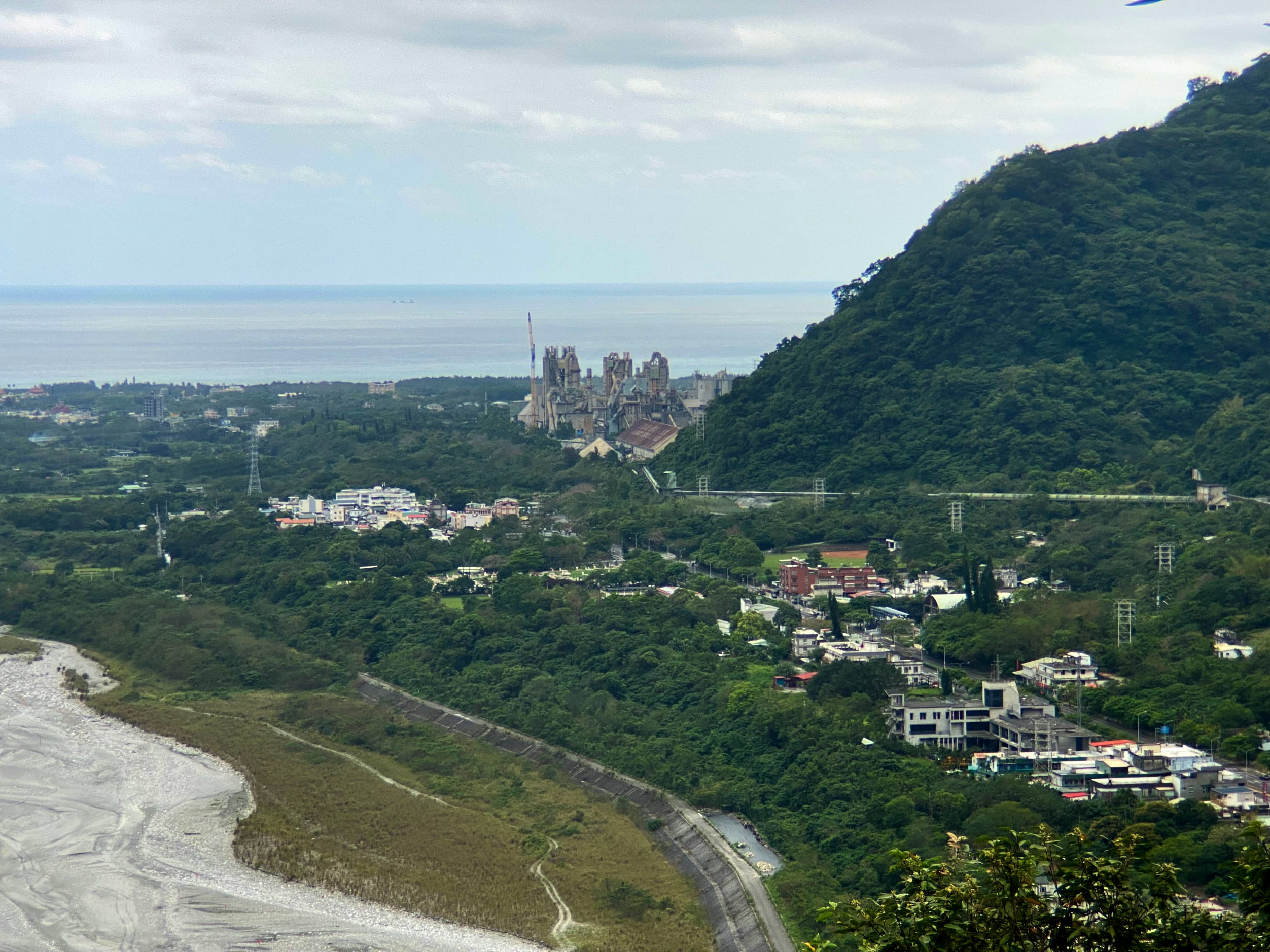
Our final stop was something called the Tunnel of Nine Turns.02 This is a pedestrian walkway that I guess is a bunch of landslide-prevention roofing carved into a cliff side. It’s pretty nice. The gorge itself is more dramatic here than anywhere else we saw.

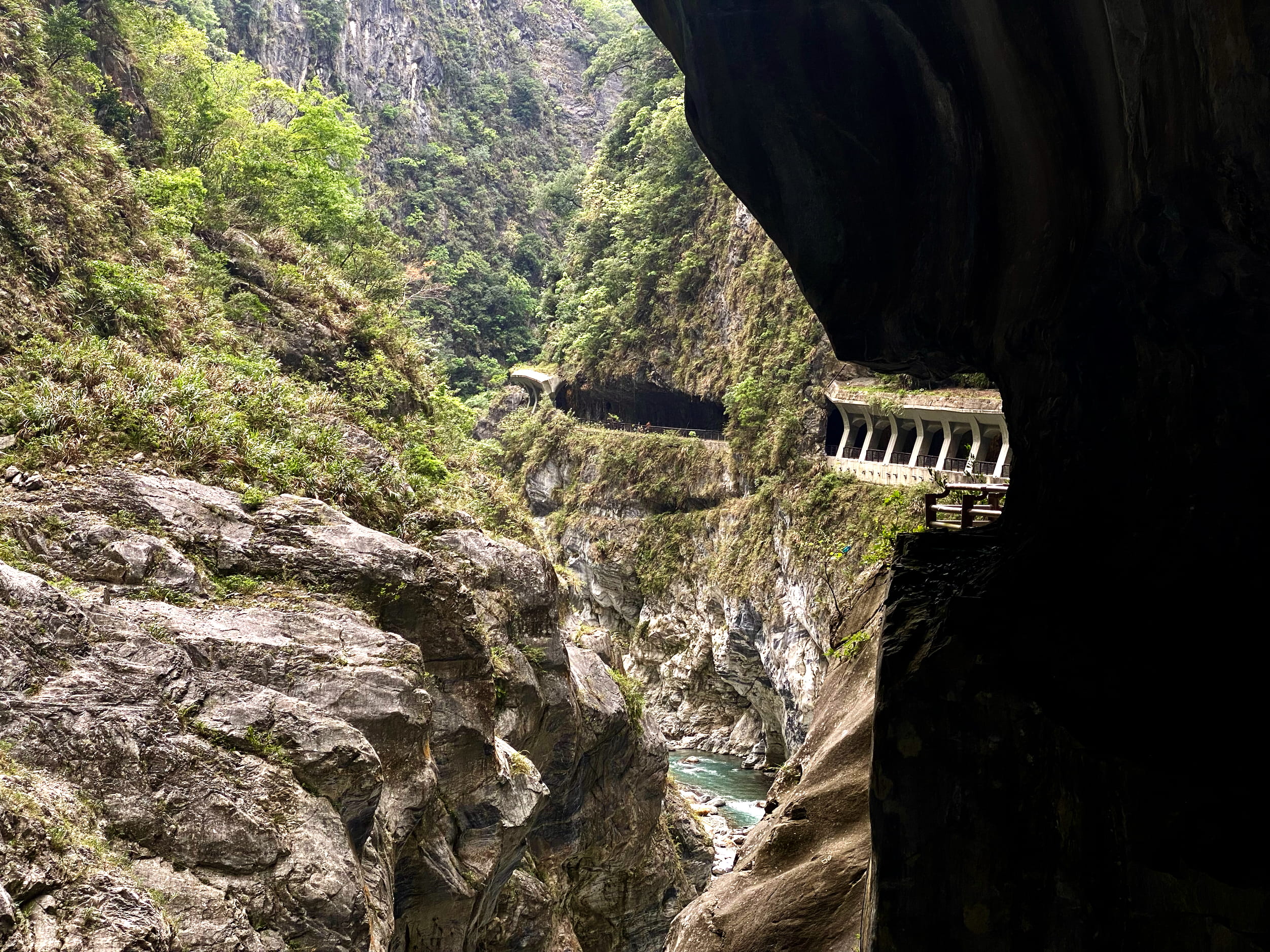
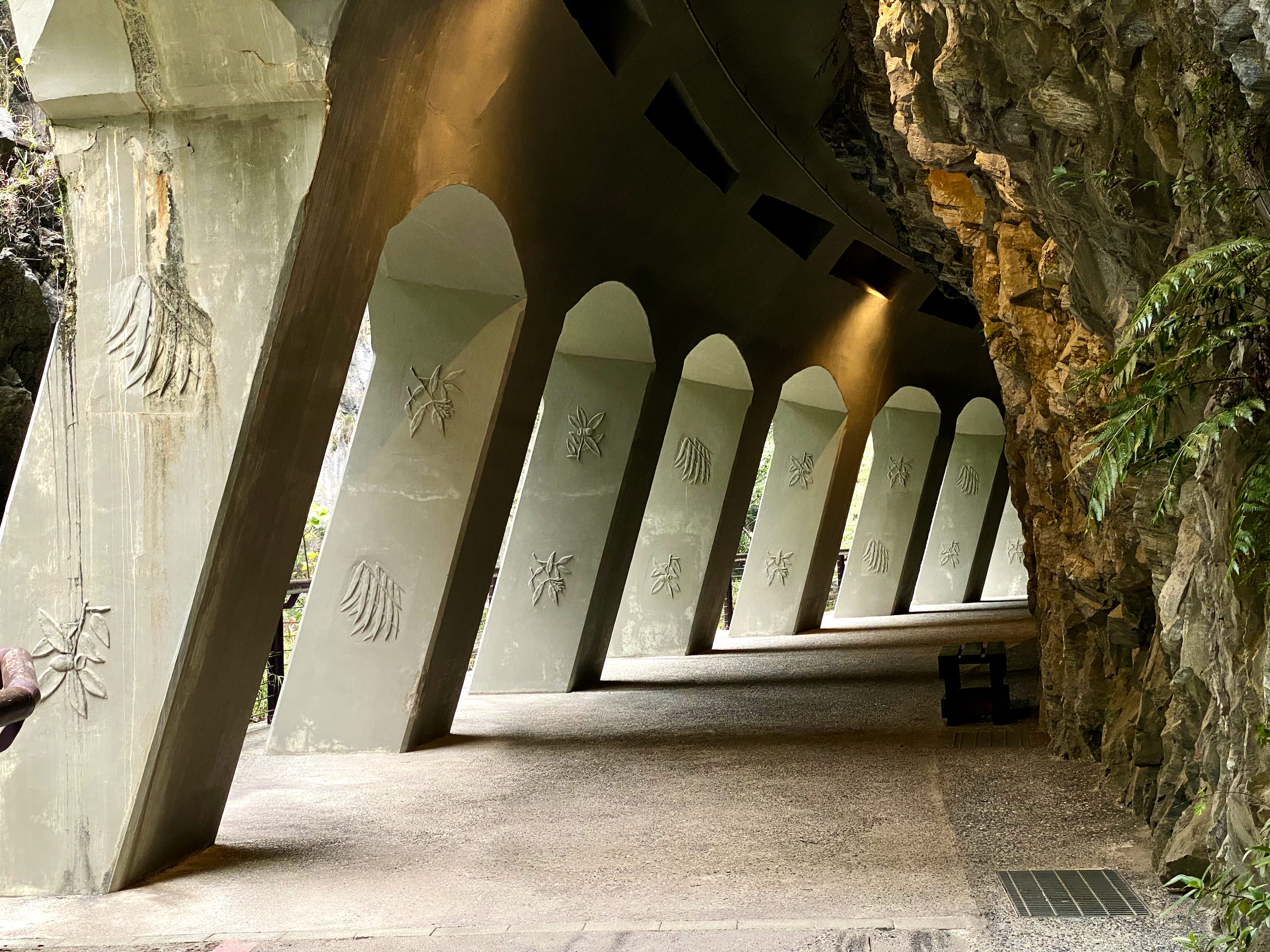
The bus ride back was completely nuts.
Double-decker bus. Comes once, I don’t know, every hour? So, end of the day, you have approximately hundreds of tourists trying to get back into town. We’re all packed into this bus. But the bus is completely ill-equipped for anyone to do anything but sit down, so most of us are standing. Then, as we fly (nearly literally) around sharp canyon turns, people inside the bus go flying (quite literally). Falling down on the floor, onto other people, into walls, into windows. The spot I ended up in didn’t allow enough space for me to stand up, so I spent the ride with my neck hunched over, squatting slightly, bracing myself against the ceiling to avoid a horizontal fate. This lasted somewhere between sixty and ninety minutes.
We treated ourselves to one hell of a hot pot after this.03
Hualien City
Hualien has a rocky, heavily tetrapoded coastline and the general feel of both thriving and falling apart at the same time. We ate food, walked around, met a dedicated coffee enthusiast, and played darts next to a swarm of the local bowling club’s matching polos.
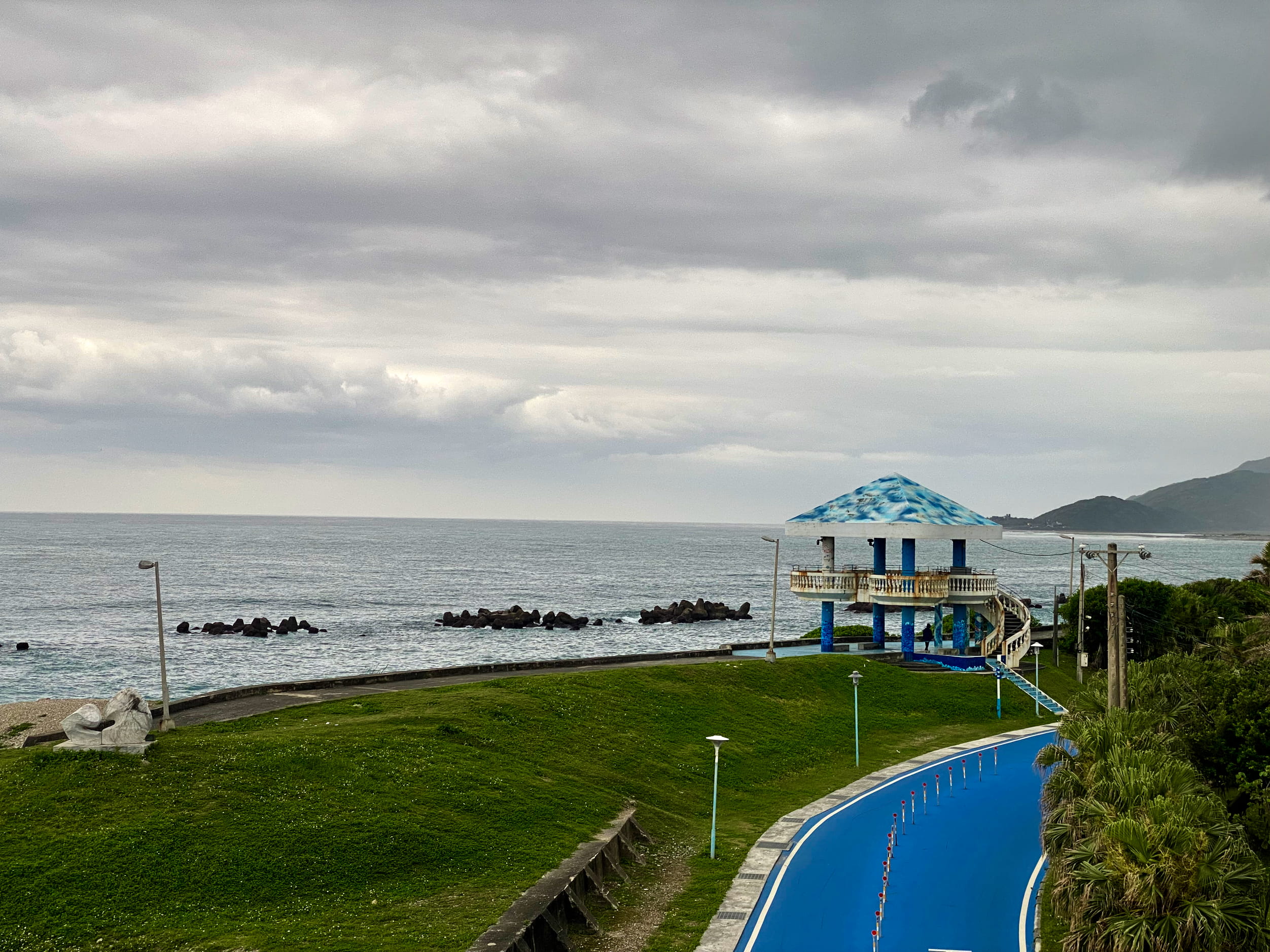
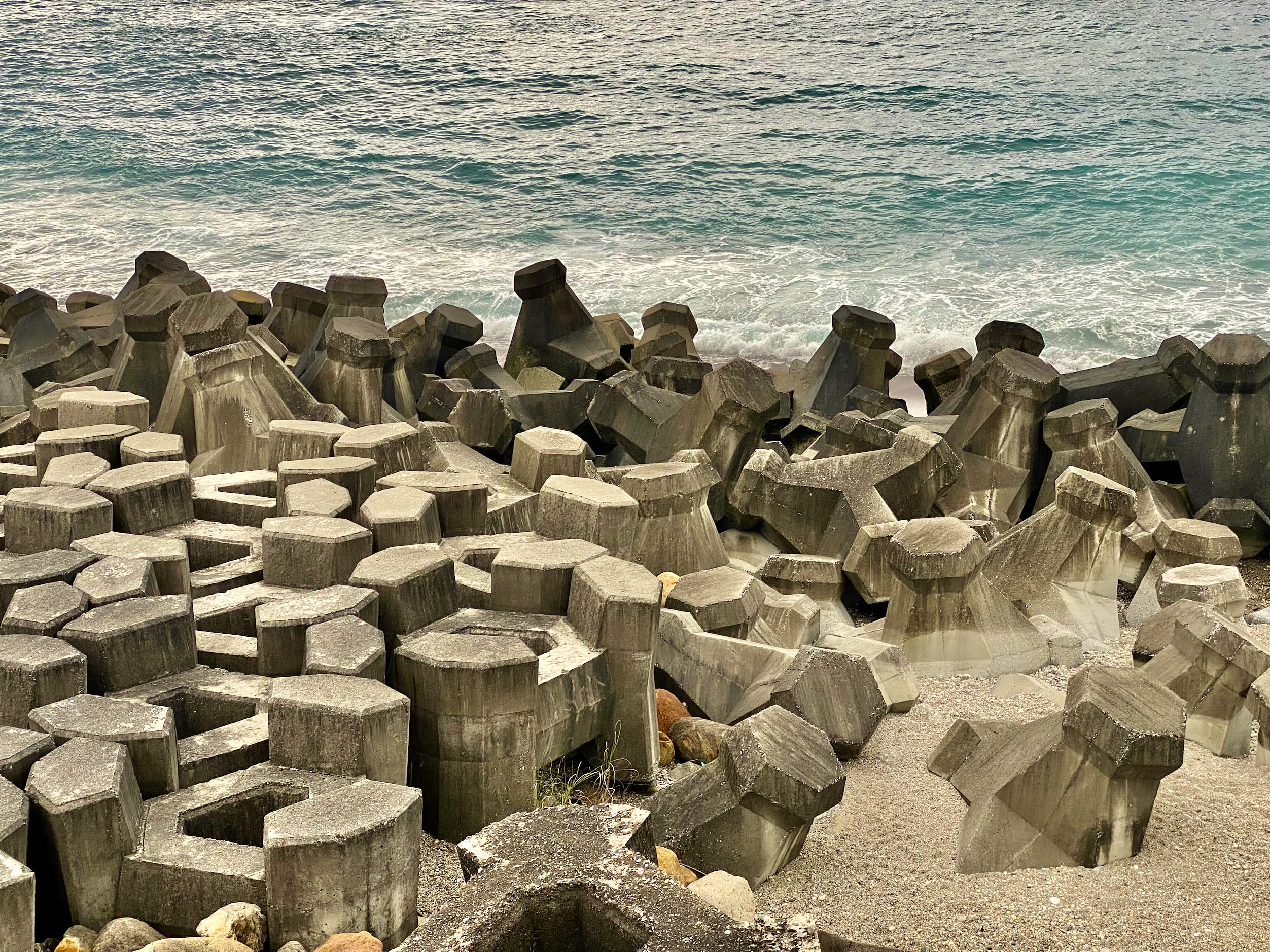
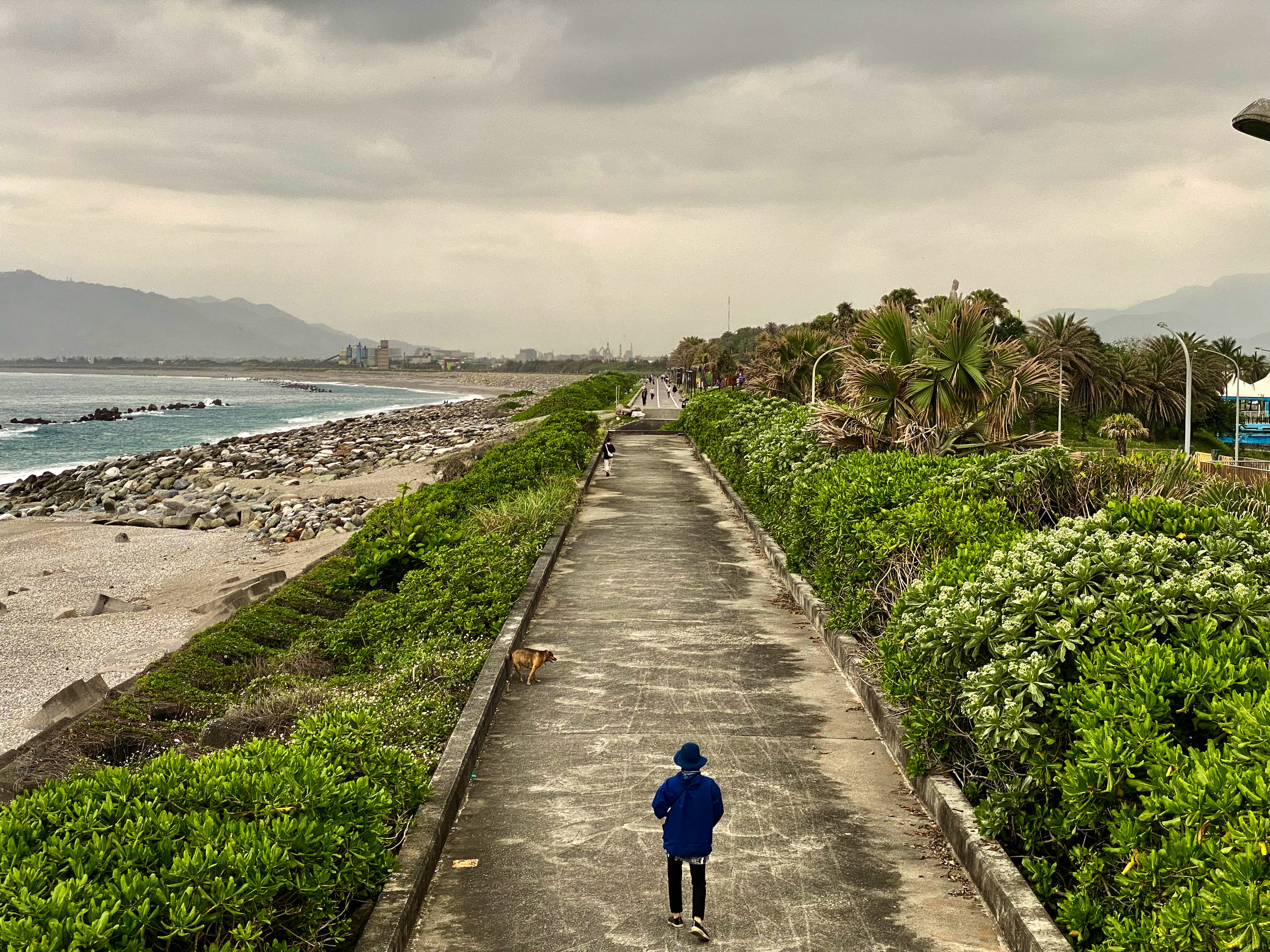

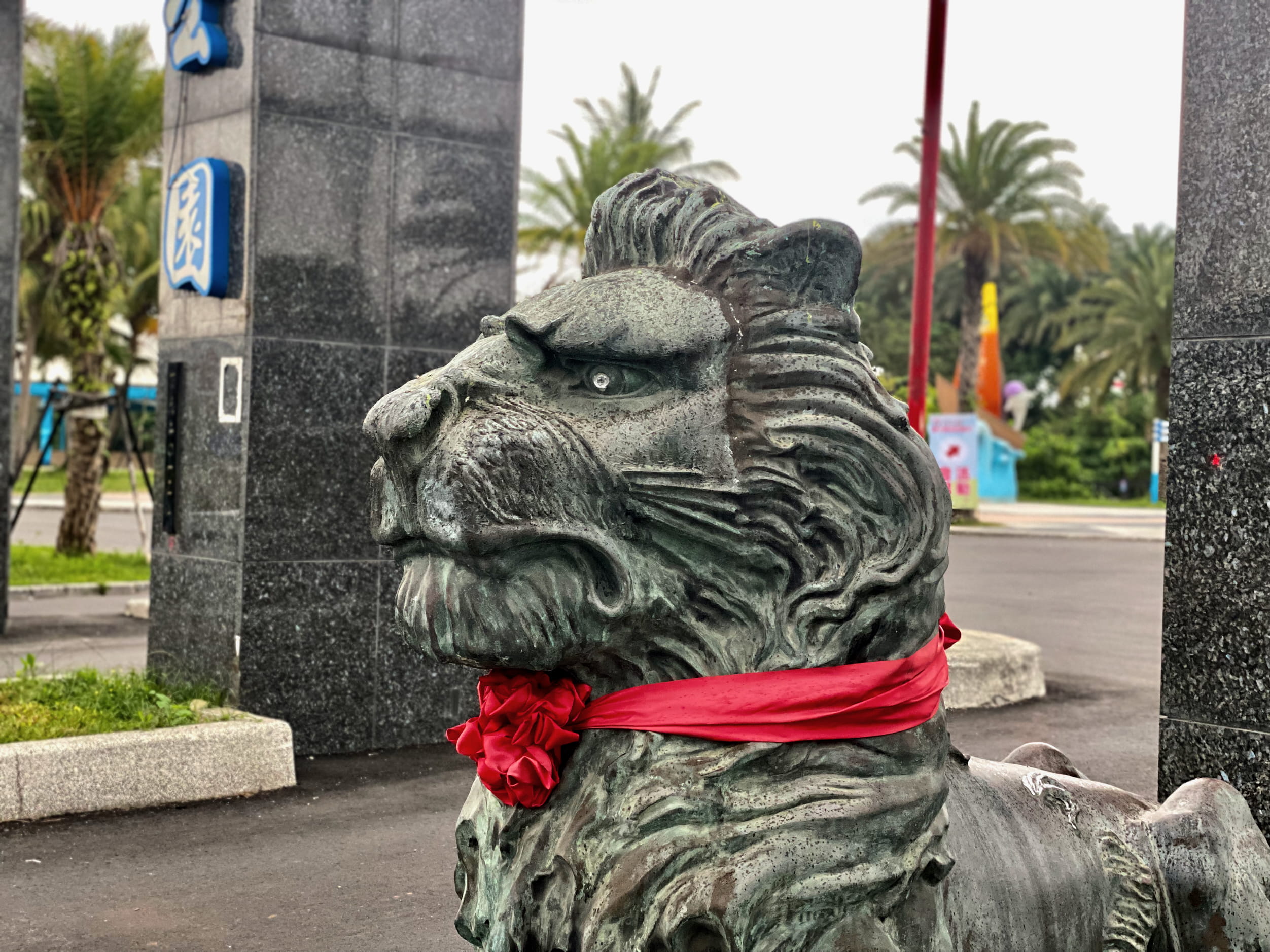
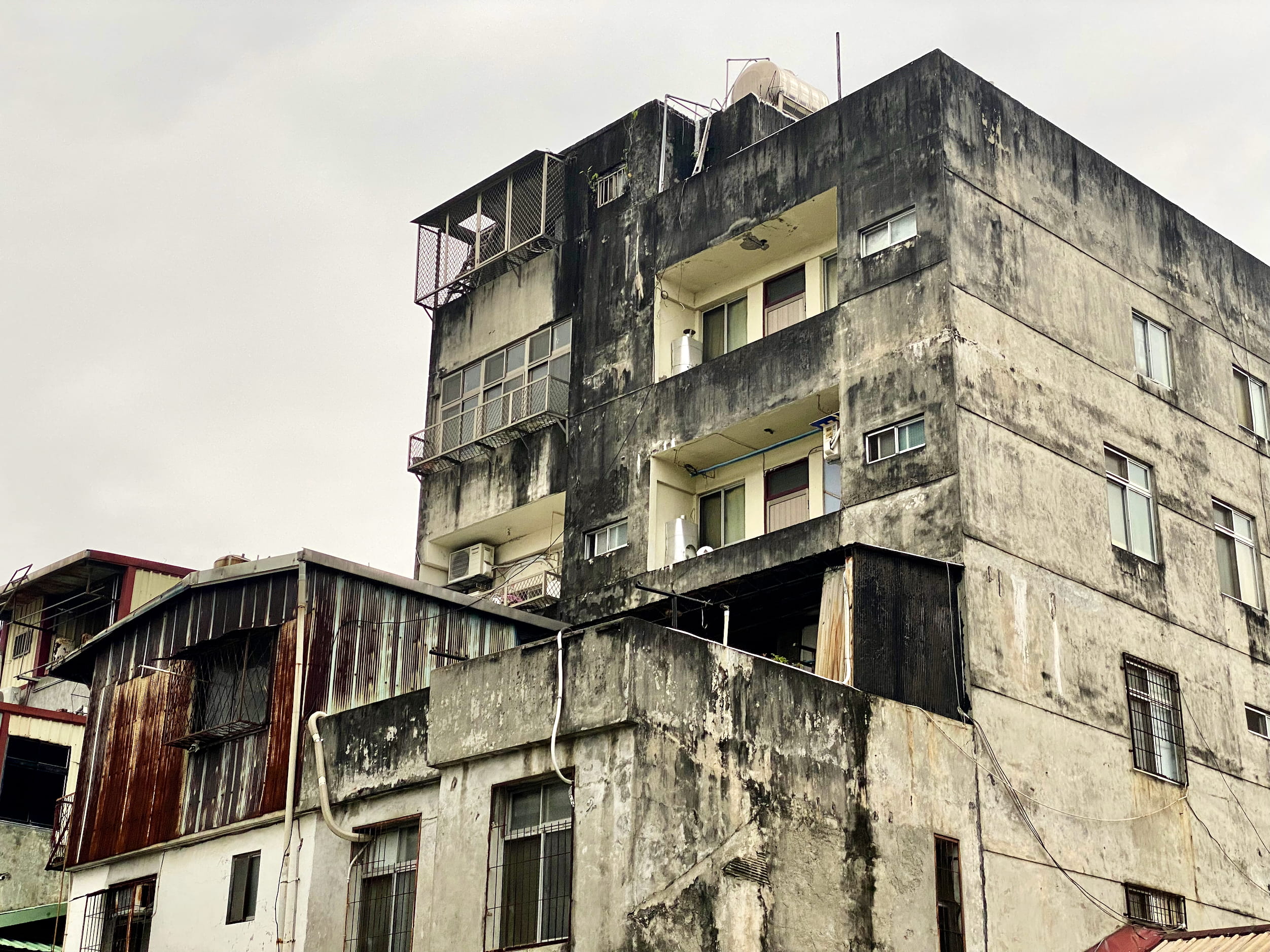
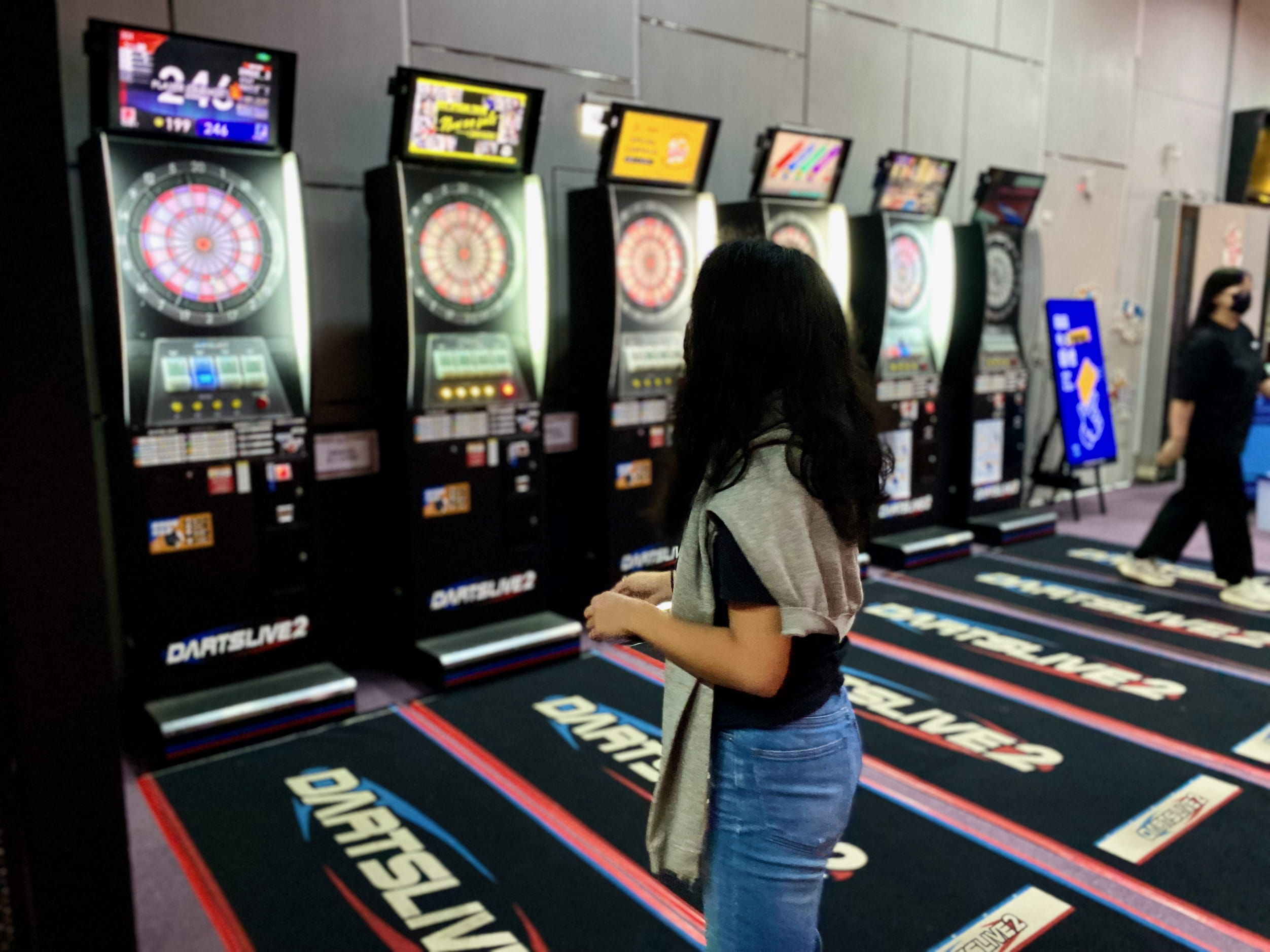
But of course I do have some little things to show you.

I immediately recognized the red hat. Do you? I wouldn’t blame you if not, it’s probably obscure even in the computer world. Check out the logo of Red Hat, Inc. (makers of, most famously, Red Hat Linux).

Can’t blame them, it’s probably more fitting for a pool hall than a Linux distribution. The only reason I knew this was because we had Red Hat Linux floppy discs lying around at home when I was a kid. Not sure why, I don’t think we ever put it on any computer.
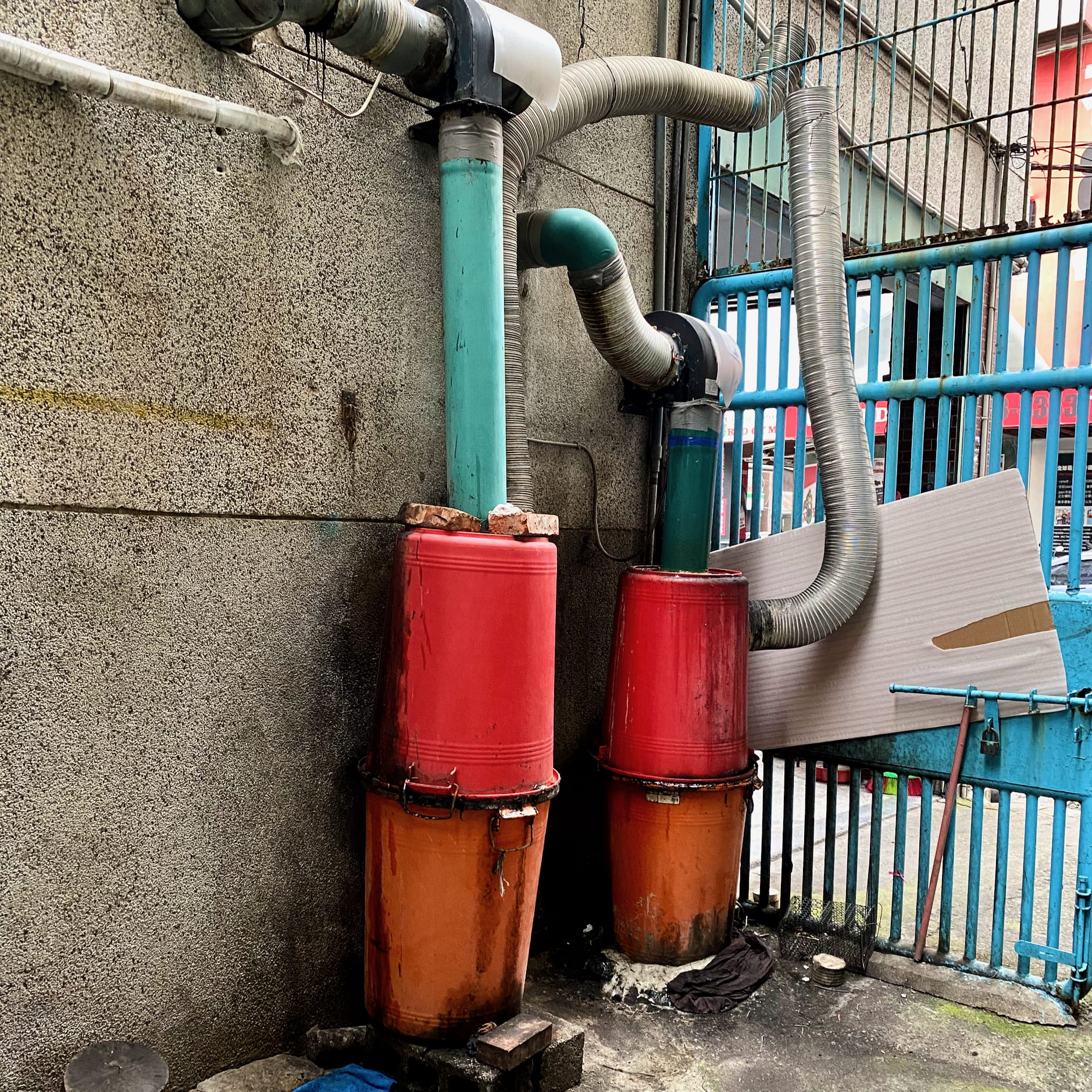
Not sure what this is doing but I like it. It looks like someone repurposed the parts of a 1970s robot.
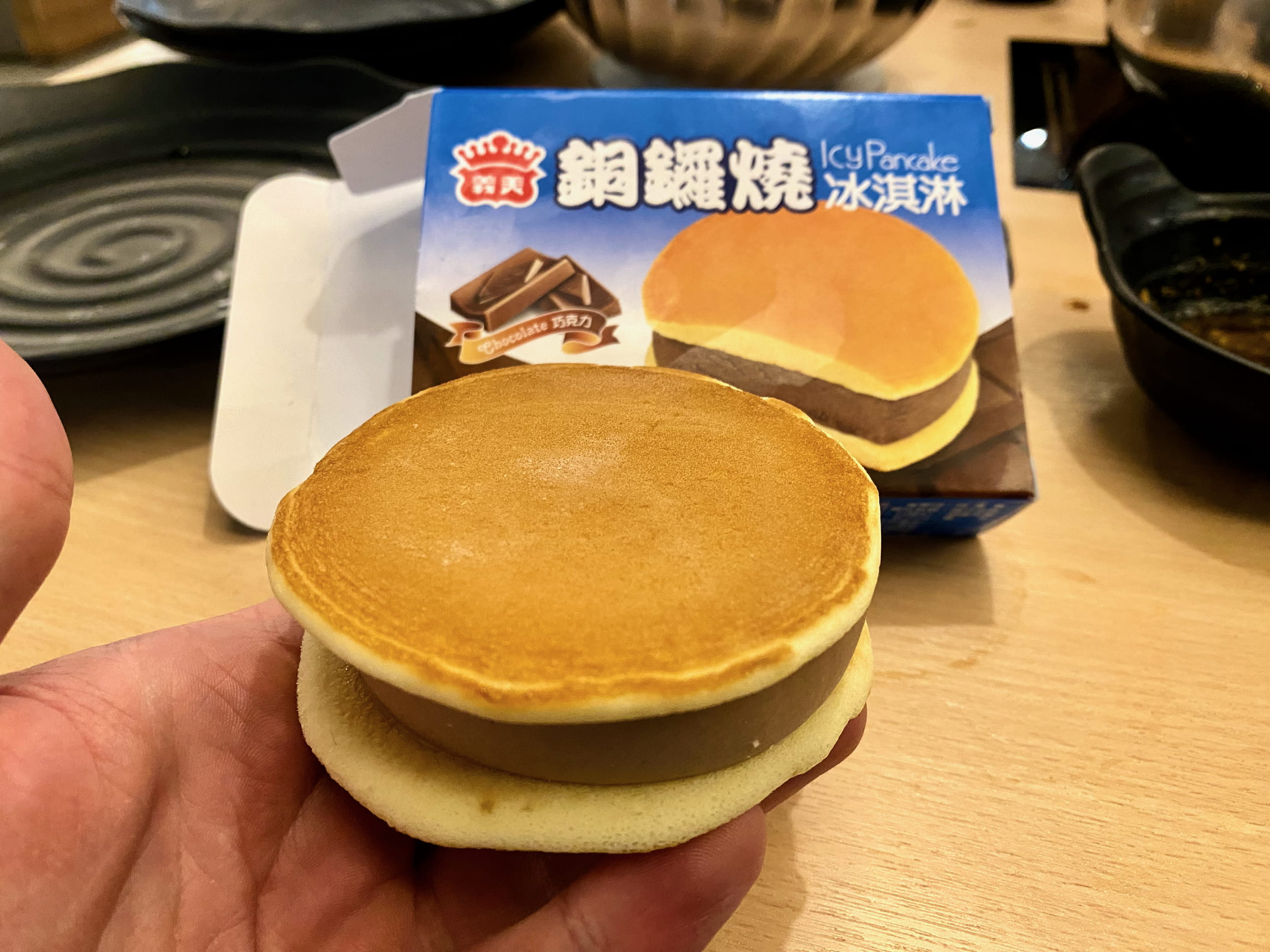
Hot pots have dessert courses, which is sort of a prank because you’ve just spent ninety minutes frantically stuffing yourself with meat and beer. In my quest to try everything, I got one of these ICyPancakes. It turned out, they are just shockingly faithful executions of the concept they advertise: kid’s ice cream put in between normal pancakes. Don’t do it, folks.
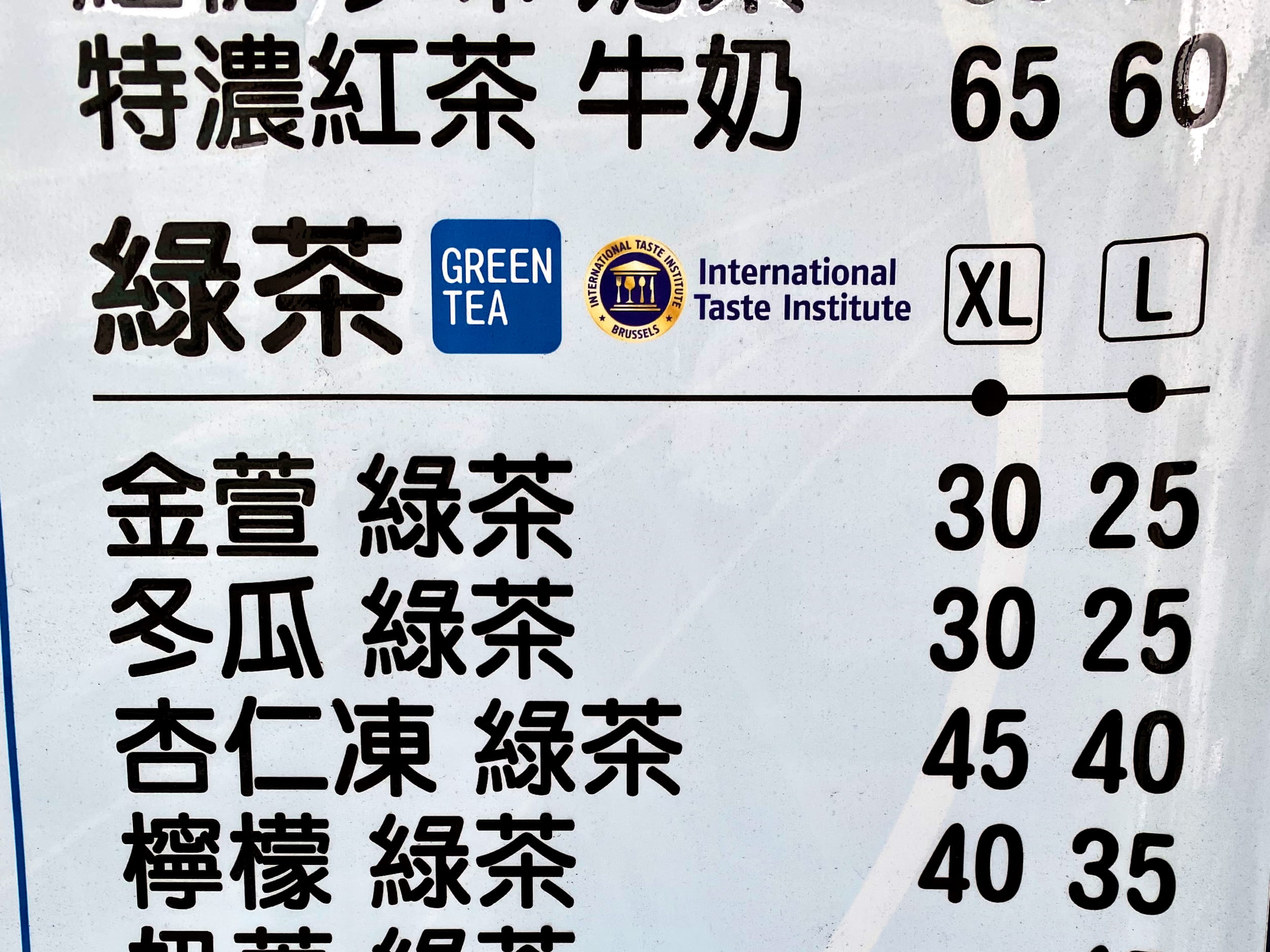
I reached a tipping point so I have to talk about it. What the heck is this Brussels International Taste Institute? I had never heard of it and now I can’t stop seeing it. I first noticed it in Spain where it was plastered all over a cooler holding some promoted brand of water (yes, water). Taiwan seems to have embraced it with a passion, because everything from butter cookies to bubble tea will sport their logo.
Completing the Loop
Hualien Station, getting ready to board the train to Taipei.
Accompanied by misty mountains, we took our final Taiwanese train out of Hualien and back to the capital.
One thing I kept noticing on train rides: dry riverbeds. They were massive and appeared over and over again. What was going on? I couldn’t tell if this was a seasonal thing, a climate change thing, an infrastructure thing (e.g., were they all dammed?), or what. Some brief Googling revealed that Taiwan may enter a bad situation drought-wise re: climate change and the wet season, but nothing remotely brought up the riverbeds. Strange.
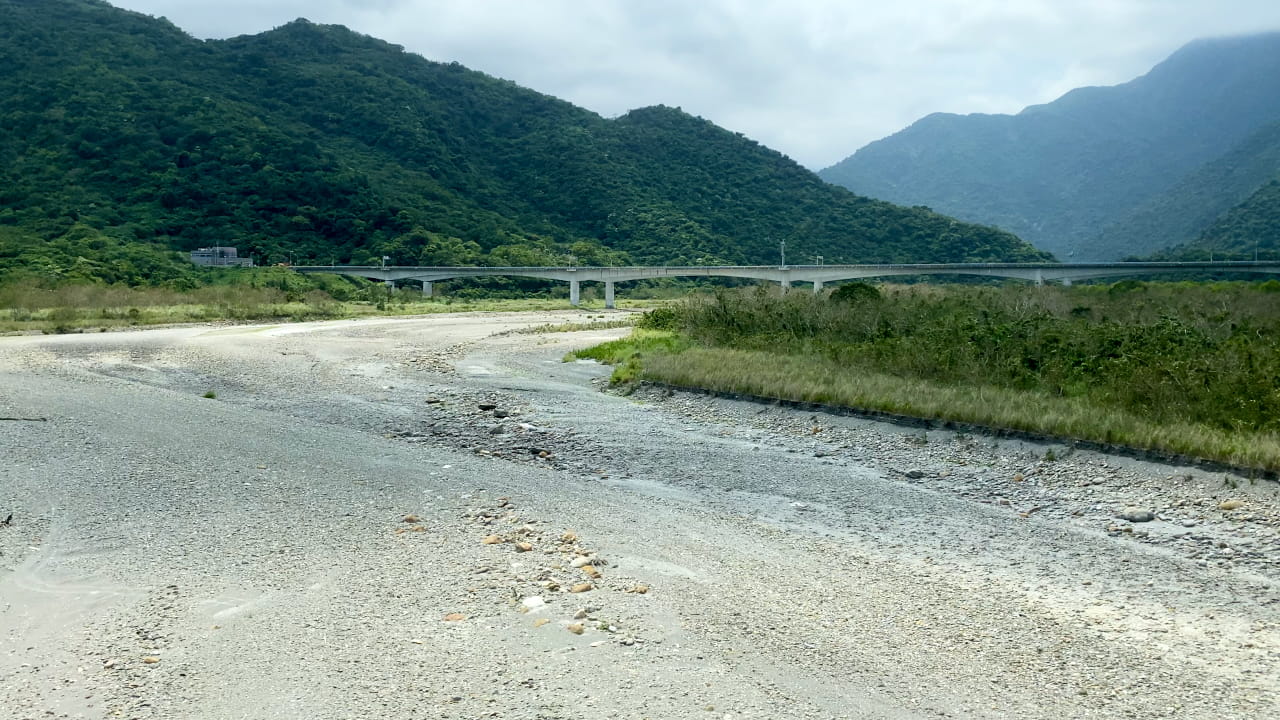
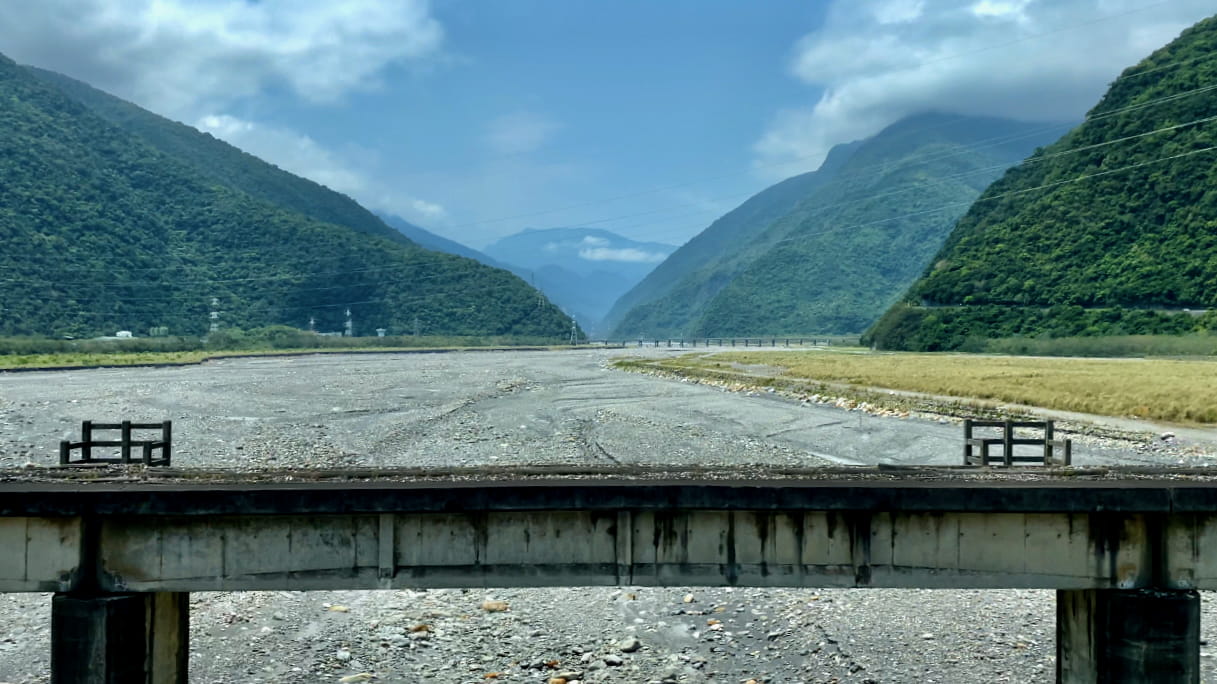
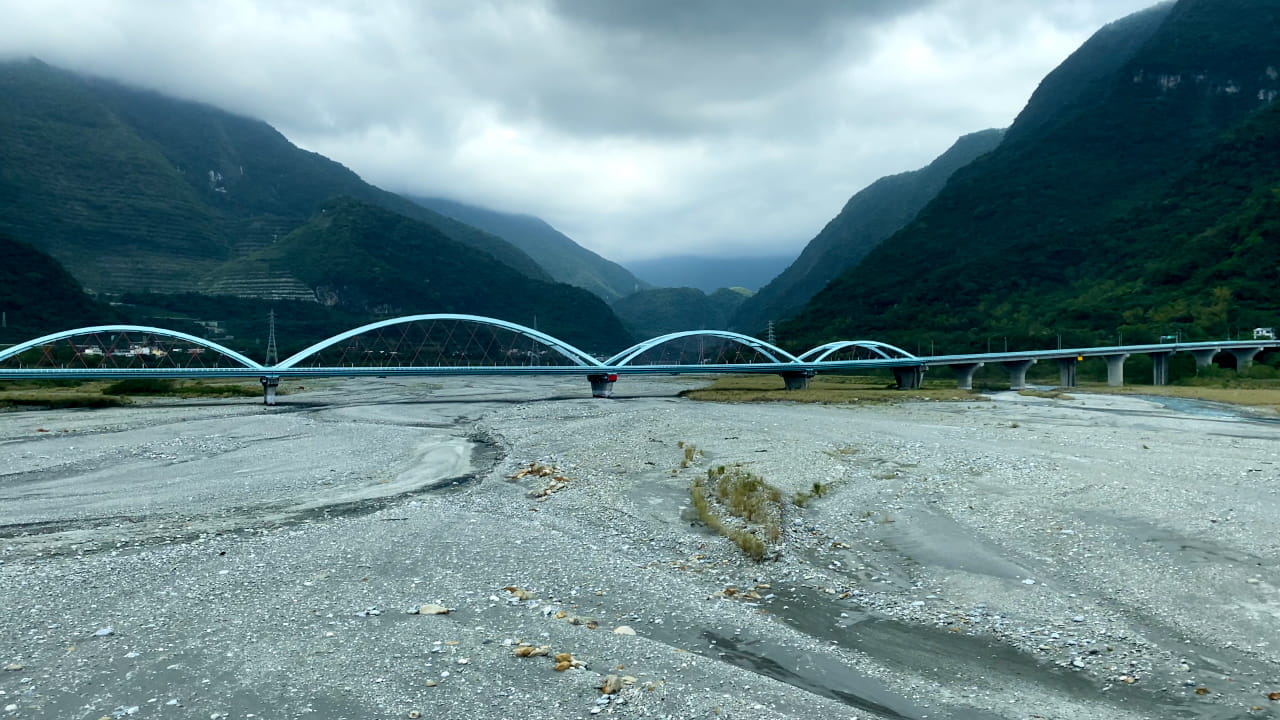
Emerging back into Taipei was a pleasant shock. The sheer density of businesses overwhelmed—they seemed packed and stacked into every block, and every block was packed and stacked together. After a while in smaller towns, it was fun to feel lost in the big city again, even if just for one day.
Bye Taiwan
I kept thinking: after two months in Taiwan, I can’t believe how little of it we’ve seen. On the trains, we’d pass endless towns and villages, forests and factories and riverbeds with stories of their own. Each city we stopped in, even walking and bussing for hours, we’d encounter just tiny slivers of what was there. The scale of the earth is humbling; even a small island nation provides so much to explore. And, of course, not speaking any dialect of Chinese, it’s even harder to say what was on people’s minds.04
With that said, I’m very glad we saw what we did. It was an immense privilege and pleasure to get to spend so long in one country. And in a way, I like that there wasn’t a deep feeling of completeness or closure. Because I’ve never felt like travel ought to be treated as a checklist—“oh, we did Taiwan.” Instead, it feels like each place you go, you’re dipping in. How deep? You could stay a week, a month, a year. And going back, you will discover new angles, uncover sides of things you hadn’t known. See how the place and the people have changed over time.
One final bubble tea in hand, we boarded the elevated airport line, rocketed over the fields of New Taipei, and checked into the flight for a much-delayed, very long stint in Japan.
Footnotes
I keep using “we” here, but let’s be clear, I was responsible for these questionable decisions. ↩︎
This is as good a time as any for a lengthy aside. Tunnel of Nine Turns, if directly translated from Chinese, results in the slightly less mystical sounding Nine Turn Tunnel. This led to those classic microconfusions where you’d ask a bus driver if they’re going to Tunnel of Nine Turns, the thing you’ve seen written online, on signs, on guidebooks, on pamphlets, etc. And they reply (in English) with Nine Turn Tunnel, which is totally correct, but just different enough from what you were expecting that you second-guess yourself and repeat your version, yielding the same reply and generally annoying the line of locals behind you waiting to get on the bus. But a broader phenomenon—which I wanted to point out but completely forgot to during an earlier post—is that variations also happen when Chinese is Romanized. In other words, people decide to “spell” Chinese words using Latin characters differently. E.g., one sign might say Lixing and another Li Hsin (Wikipedia has an example of both of these spellings visible on two signs next to each other). Meanwhile, Google Maps is probably auto-pronouncing someone that vaguely sounds like neither at you. This is rare in Taipei, but common when you are driving through rural areas with fewer foreign tourists. A part of me loved it when this happened. It felt like a little window into the past, and one that would disappear with time. ↩︎
I don’t think I’ve mentioned this before, but we got completely hooked on hot pot in Taiwan. It was everywhere, and always all-you-can-eat and almost always all-you-can-drink. Afterwards we would be able to do nothing but lie down for somewhere between three and four hours. ↩︎
Watching local news was an unexpectedly useful activity to get some sense of the goings on. I want to remember this trick. ↩︎
